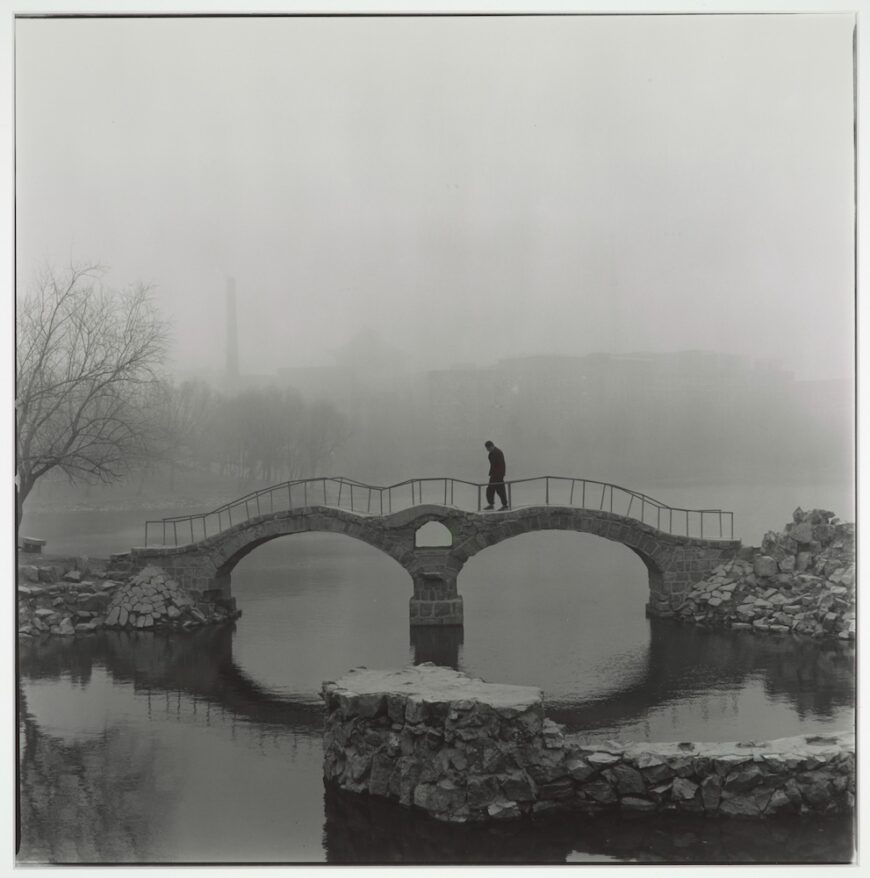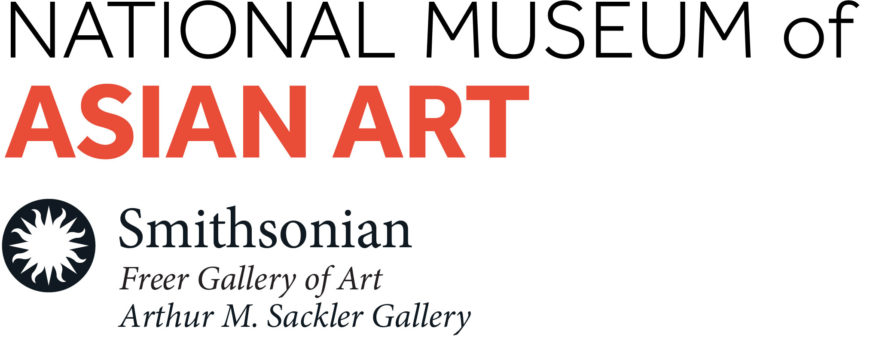
Hai Bo, Untitled No. 36, 2001 (China), gelatin silver print on paper, 67.9 x 66.7 cm (Arthur M. Sackler Gallery, Smithsonian Institution, Washington, D.C.: Purchase—funds provided by the Friends of the Freer and Sackler Galleries, S2011.7)
In this photo, a man is crossing a double arch bridge in a park. He seems so tiny and lonely compared to the overwhelming scale of the surrounding environment. The whole scene is enveloped in a cold and gray light, reinforcing the sense of absence and isolation. Demolition debris excavated at both ends of the bridge suggests that it will be removed soon. Meanwhile, the nearby city booms in the distant but cloudy horizon.
The photograph depicts a small park in Changchun of Jilin province in northeast China. This is the hometown that the artist Hai Bo (born 1962) has been returning to for more than two decades. Hai Bo and his late brother used to play in the park as children. The bridge and the park thus bear sweet childhood memories of the artist. By recording the disappearing landscape of his youth, Hai Bo not only documents the economic and environmental changes of contemporary China, but conveys the impossibility of ever returning to the place of one’s memories.
Hai Bo has a deep affection for his hometown and the simple village living that he experienced during his childhood. That landscape, however, has been forever altered by China’s unprecedented economic growth. The photograph both documents a specific place in time, as well as captures the artist’s personal story and feelings.
 This resource was developed for Teaching China with the Smithsonian, made possible by the generous support of the Freeman Foundation
This resource was developed for Teaching China with the Smithsonian, made possible by the generous support of the Freeman Foundation
For the classroom
Discussion questions:
- This photograph is untitled. Based on what you see, what title would you give this photograph?
- Why do you think the artist chose to photograph this scene in black and white instead of color film?
- Where have you witnessed demolition and construction in your town? How do the changes make you feel?
- What do you think the artist Hai Bo notices about his hometown? What does he think about the changes? What does he care about? What might he wonder about or question?
Additional resources

